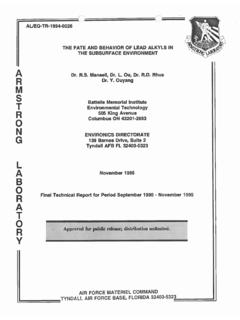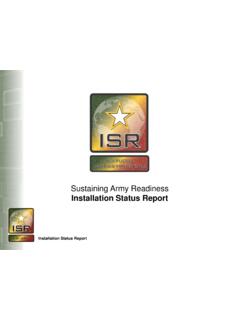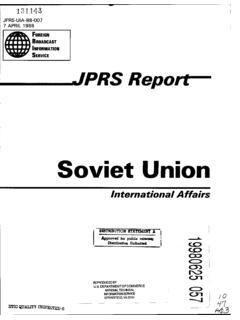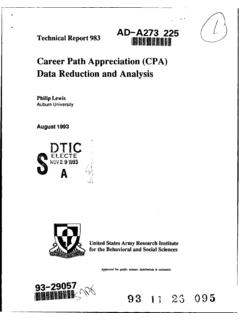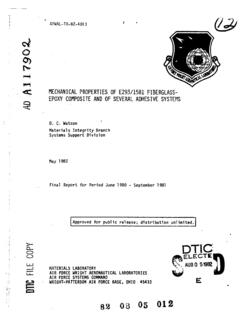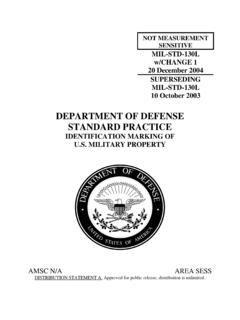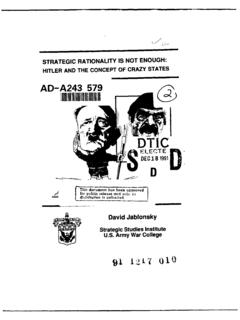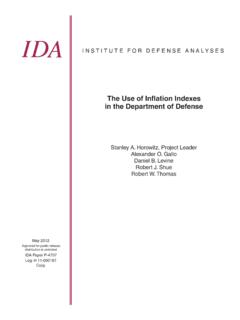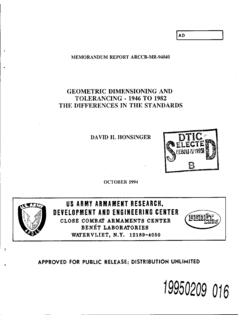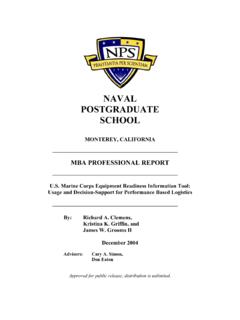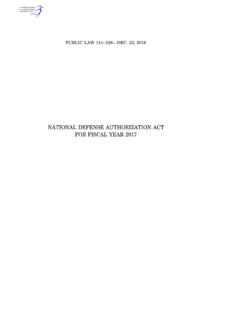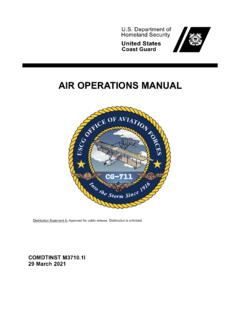Transcription of Unmanned Aerial Vehicles: Implications for Military …
1 Unmanned Aerial Vehicles: Implications for Military Operations David Glade, Lt Col, USAF. July 2000. 16 Occasional Paper No. 16. Center for Strategy and Technology Air War College Air University Maxwell Air Force Base Form Approved Report Documentation Page OMB No. 0704-0188. Public reporting burden for the collection of information is estimated to average 1 hour per response, including the time for reviewing instructions, searching existing data sources, gathering and maintaining the data needed, and completing and reviewing the collection of information.
2 Send comments regarding this burden estimate or any other aspect of this collection of information, including suggestions for reducing this burden, to Washington Headquarters Services, Directorate for Information Operations and Reports, 1215 Jefferson Davis Highway, Suite 1204, Arlington VA 22202-4302. Respondents should be aware that notwithstanding any other provision of law, no person shall be subject to a penalty for failing to comply with a collection of information if it does not display a currently valid OMB control number.
3 1. REPORT DATE 2. REPORT TYPE 3. DATES COVERED. JUL 2000 N/A - 4. TITLE AND SUBTITLE 5a. CONTRACT NUMBER. Unmanned Aerial Vehicles: Implications for Military Operations 5b. GRANT NUMBER. 5c. PROGRAM ELEMENT NUMBER. 6. AUTHOR(S) 5d. PROJECT NUMBER. 5e. TASK NUMBER. 5f. WORK UNIT NUMBER. 7. PERFORMING ORGANIZATION NAME(S) AND ADDRESS(ES) 8. PERFORMING ORGANIZATION. REPORT NUMBER. Air University Press Maxwell AFB, AL 36112-6615. 9. SPONSORING/MONITORING AGENCY NAME(S) AND ADDRESS(ES) 10. SPONSOR/MONITOR'S ACRONYM(S). 11. SPONSOR/MONITOR'S REPORT.
4 NUMBER(S). 12. DISTRIBUTION/AVAILABILITY STATEMENT. Approved for public release, distribution unlimited 13. SUPPLEMENTARY NOTES. 14. ABSTRACT. 15. SUBJECT TERMS. 16. SECURITY CLASSIFICATION OF: 17. LIMITATION OF 18. NUMBER 19a. NAME OF. ABSTRACT OF PAGES RESPONSIBLE PERSON. a. REPORT b. ABSTRACT c. THIS PAGE. UU 38. unclassified unclassified unclassified Standard Form 298 (Rev. 8-98). Prescribed by ANSI Std Z39-18. Unmanned Aerial Vehicles: Implications for Military Operations by David Glade, Lt Col, USAF. July 2000. Occasional Paper No.
5 16. Center for Strategy and Technology Air War College Air University Maxwell Air Force Base, Alabama Unmanned Aerial Vehicles: Implications for Military Operations David Glade, Lieutenant Colonel, USAF. July 2000. The Occasional Papers series was established by the Center for Strategy and Technology as a forum for research on topics that reflect long-term strategic thinking about technology and its Implications for national security. Copies of No. 16 in this series are available from the Center for Strategy and Technology, Air War College, 325 Chennault Circle, Maxwell AFB, Montgomery, Alabama 36112.
6 The fax number is (334) 953-1988; phone (334) 953-2985. Occasional Paper No. 16. Center for Strategy and Technology Air War College Air University Maxwell Air Force Base, Alabama 36112. Contents Page Disclaimer i Acknowledgments ii Abstract iii Author iv I. Introduction 1. II. Defining Aerial Vehicles 3. III. Evaluating Aerial Vehicles 9. IV. Military Roles for Unmanned Aerial Vehicles 17. V. Conclusions 21. Notes 25. Disclaimer The views expressed in this publication are those of the author and do not reflect the official policy or position of the Department of Defense, the United States Government, or of the Air War College Center for Strategy and Technology.
7 Acknowledgments I would like to express my appreciation to my Air War College faculty advisors Dr. William C. Martel and Col (Ret) Theodore C. Hailes for their invaluable encouragement and editorial assistance. I would also like to express my thanks to my wife for her constant support and encouragement. Abstract The development of uninhabited Aerial vehicles (UAVs) could potentially revolutionize how Military force is used in the future. While the early operational experiences with UAVs show great promise, their full range of capabilities is largely unknown.
8 However, it is clear that these technologies will enable Military forces to use aerospace power more efficiently, which means at lower cost and with less risk to the humans who pilot aircraft. The broader question is the wisdom of using Unmanned Aerial vehicles for employing lethal force, and in particular which air power missions are best accomplished by uninhabited, piloted, and autonomous vehicles. The corollary is to examine the essential roles of human pilots or operators in aerospace operations in the twenty-first century. Since it is common to draw distinctions between vehicles with an on-board pilot, vehicles with off-board operators, and autonomous vehicles, this study explores the essential role of pilots and contrasts it with the roles of remotely piloted and autonomous vehicles.
9 The assumption is that piloted, remotely piloted, and autonomous vehicles have advantages and disadvantages in Military operations, and that these vary in strategic significance for different levels of conflict. Since it is essential for the defense establishment to consider the strategic and technological Implications of these types of Aerial vehicles, this study is devoted to addressing the issues raised by the new generation of Aerial vehicles. The Author David B. Glade, Lieutenant Colonel, USAF, is the Acting Chief of the Air Force Superiority mission Area Team in the Requirements Directorate of the Headquarters of the Air Combat Command at Langley Air Force Base in Virginia.
10 A flight test pilot, he was the deputy chief of test and evaluation for the F-22 System Program Office at Wright Patterson AFB in Dayton, Ohio, where he was responsible for planning the ground and flight test program for the Air Forces F-22 fighter. He served as an experimental test pilot at Edwards AFB, where he flight tested all models of the F-15, including certifying the F-15E for terrain following operation in weather, testing a ground collision warning system, and numerous radar, flight control, weapons, and engine tests. He also served as the chief F-15 instructor at the USAF Test Pilot School.
